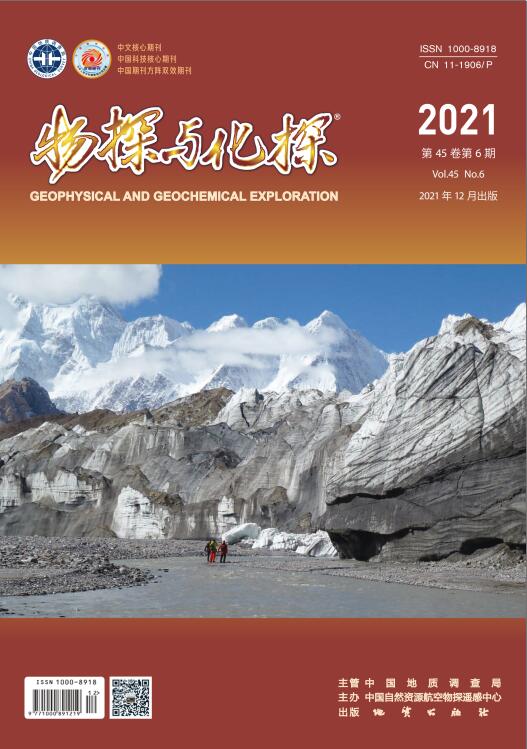| [1] |
陕西省考古研究院, 昭陵博物馆. 唐昭陵韦贵妃墓发掘报告[M]. 北京: 科学出版社, 2017.
Google Scholar
|
| [2] |
Shaanxi Institute of Archaeology, Zhaoling Museum. Tomb of the Wei Concubine in the Tang-danasty Zhao mausoleum compound [M]. Beijing: Science Press, 2017.
Google Scholar
|
| [3] |
沈睿文. 唐帝陵的布局:空间与秩序[M]. 北京: 北京大学出版社, 2009.
Google Scholar
|
| [4] |
Shen R W. The arrangement of Tang Mausoleum: Space and order [M]. Beijing: Peking University Press, 2009.
Google Scholar
|
| [5] |
杨洪冰, 贾嫚. 唐墓壁画中的文化意蕴——以唐韦贵妃墓啸伎图为中心[J]. 南京艺术学院学报:美术与设计, 2017, 2:58-63.
Google Scholar
|
| [6] |
Yang H B, Jia M. The cultural implication in the fresco of Tang mausoleum — the center is the drama of Tomb of the Wei Concubine in the Tang-danasty[J]. Journal of Nanjing University of the Arts:Fine Arts and Design, 2017, 2:58-63.
Google Scholar
|
| [7] |
张胜业, 潘玉玲. 应用地球物理学原理[M]. 武汉: 中国地质大学出版社, 2004.
Google Scholar
|
| [8] |
Zhang S Y, Pan Y L. The principles of apply geophysics [M]. Wuhan: China University of Geosciences Press, 2004.
Google Scholar
|
| [9] |
蒋宏耀, 张立敏. 考古地球物理学[M]. 北京: 科学出版社, 2000.
Google Scholar
|
| [10] |
Jiang H Y, Zhang L M. Archaeological geophysics [M]. Beijing: Science Press, 2000.
Google Scholar
|
| [11] |
张寅生. 物探在考古勘探中的应用初探[J]. 物探与化探, 1990, 14(6):444-451.
Google Scholar
|
| [12] |
Zhang Y S. A preliminary study on the application of geophysical exploration in archaeology[J]. Geophysical and Geochemical Exploration, 1990, 14(6):444-451.
Google Scholar
|
| [13] |
钟世航. 地球物理技术在我国考古和文物保护工作中的应用[J]. 地球物理学进展, 2004, 34(5):635-643.
Google Scholar
|
| [14] |
Zhong S H. Application of geophysical technology in Archaeological and cultural Relic protection in China[J]. Progress in Geophysics, 2004, 34(5):635-643.
Google Scholar
|
| [15] |
高立兵, 王斌, 夏明军. GPR技术在考古勘探中的应用[J]. 地球物理学进展, 2000, 15(1):61-69.
Google Scholar
|
| [16] |
Gao L B, Wang B, Xia M J. Application of GPR technology in archaeological exploration[J]. Progress in Geophysics, 2000, 15(1):61-69.
Google Scholar
|
| [17] |
彭格林, 杨宇仁, 余仁富, 等. 物化探方法对古墓完整性的研究[J]. 物探与化探, 2000, 24(3):233-239.
Google Scholar
|
| [18] |
Peng G L, Yang Y R, Yu R F, et al. The study of the integrity of ancient tombs by geophysical and geochemical exploration[J]. Geophysical and Geochemical Exploration, 2000, 24(3):233-239.
Google Scholar
|
| [19] |
刘士毅, 袁炳强, 吕国印, 等. 综合地球物理方法在探测秦始皇帝陵中的应用[J]. 工程地球物理学报, 2004, 1(3):213-219.
Google Scholar
|
| [20] |
Liu S Y, Yuan B Q, Lyu G Y, et al. Research on the Integrity of ancient tombs by geophysical and geochemical exploration application of integrated geophysical methods in the exploration of emperor Qin Shi Huang's mausoleum[J]. Journal of Engineering Geophysics, 2004, 1(3):213-219.
Google Scholar
|
| [21] |
袁炳强, 杨明生, 刘士毅, 等. 高精度重力测量秦始皇帝陵地宫[J]. 地球科学:中国地质大学学报, 2005, 30(4):498-502.
Google Scholar
|
| [22] |
Yuan B Q, Yang M S, Liu S Y, et al. High precision gravity measurement of the underground palace of emperor Qin Shihuang's mausoleum[J]. The Geoscience:Journal of China University of Geosciences, 2005, 30(4):498-502.
Google Scholar
|
| [23] |
周小虎, 谭克龙, 万余庆, 等. 现代遥感技术在秦始皇陵考古研究中的应用[J]. 现代地质, 2007, 21(1):157-162.
Google Scholar
|
| [24] |
Zhou X H, Tan K L, Wan Y Q, et al. Application of remote sensing technology in archaeological research of Qin Shihuang's mausoleum[J]. Modern Geology, 2007, 21(1):157-162.
Google Scholar
|
| [25] |
孙萍萍, 余常华, 田中英, 等. 关中盆地城市群地下文物遗迹精准探测——以茂陵为例[J]. 西北地质, 2019, 52(2):72-82.
Google Scholar
|
| [26] |
Sun P P, Yu C H, Tian Z Y, et al. Accurate detection of underground cultural and historic in Guanzhong basin:Example from the Maoling mausoleum[J]. Northwestern Geology, 2019, 52(2):72-82.
Google Scholar
|
| [27] |
沈鸿雁, 袁炳强, 肖钟祥, 等. 晋阳古城遗址考古地球物理特征[J]. 地球物理学进展, 2008, 23(4):1291-1298.
Google Scholar
|
| [28] |
Shen H Y, Yuan B Q, Xiao Z X, et al. The geophysical characteristics of Jinyang ancient city with the archaeology works[J]. Progress in Geophysics, 2008, 23(4):1291-1298.
Google Scholar
|
| [29] |
董浩斌, 王传雷. 高密度电法的发展与应用[J]. 地学前沿, 2003, 10(1):171-176.
Google Scholar
|
| [30] |
Dong H B, Wang C L. Development and application of high density electrical method[J]. Geoscience Frontier, 2003, 10(1):171-176.
Google Scholar
|
| [31] |
苏勇军, 王绪本, 罗建群. 高密度电阻率法在三星堆壕沟考古勘探中应用研究[J]. 地球物理学进展, 2007, 22(1):268-272.
Google Scholar
|
| [32] |
Su Y J, Wang X B, Luo J Q. The archaeological application of high density resistivity method to ditch exploration on Sanxingdui Site[J]. Progress in Geophysics, 2007, 22(1):268-272.
Google Scholar
|
| [33] |
王亮, 王绪本, 李正文. 探地雷达在金沙遗址考古探测中的应用研究[J]. 物探与化探, 2008, 32(4):401-403.
Google Scholar
|
| [34] |
Wang L, Wang X B, Li Z W. Application of ground penetrating radar to archeaological exploration in Jinsha ruins site[J]. Geophysical and Geochemical Exploration, 2008, 32(4):401-403.
Google Scholar
|
| [35] |
许新钢, 李党民, 周杰. 地质雷达中干扰波的识别及处理对策[J]. 工程地球物理学报, 2006, 3(2):114-118.
Google Scholar
|
| [36] |
Xu X G, Li D M, Zhou J. Identifying Interferential wave in GPR and its countermeasures[J]. Chinese Journal of Engineering Geophysics, 2006, 3(2):114-118.
Google Scholar
|
| [37] |
邵永新, 任峰. 沧东断裂天津段的土壤氡探测[J]. 华北地震科学, 2019(1):34-38.
Google Scholar
|
| [38] |
Shao Y X, Ren F. Soil radon detection in Tianjin Cangdong fault[J]. North China Seismic Science, 2019(1):34-38.
Google Scholar
|






 DownLoad:
DownLoad: